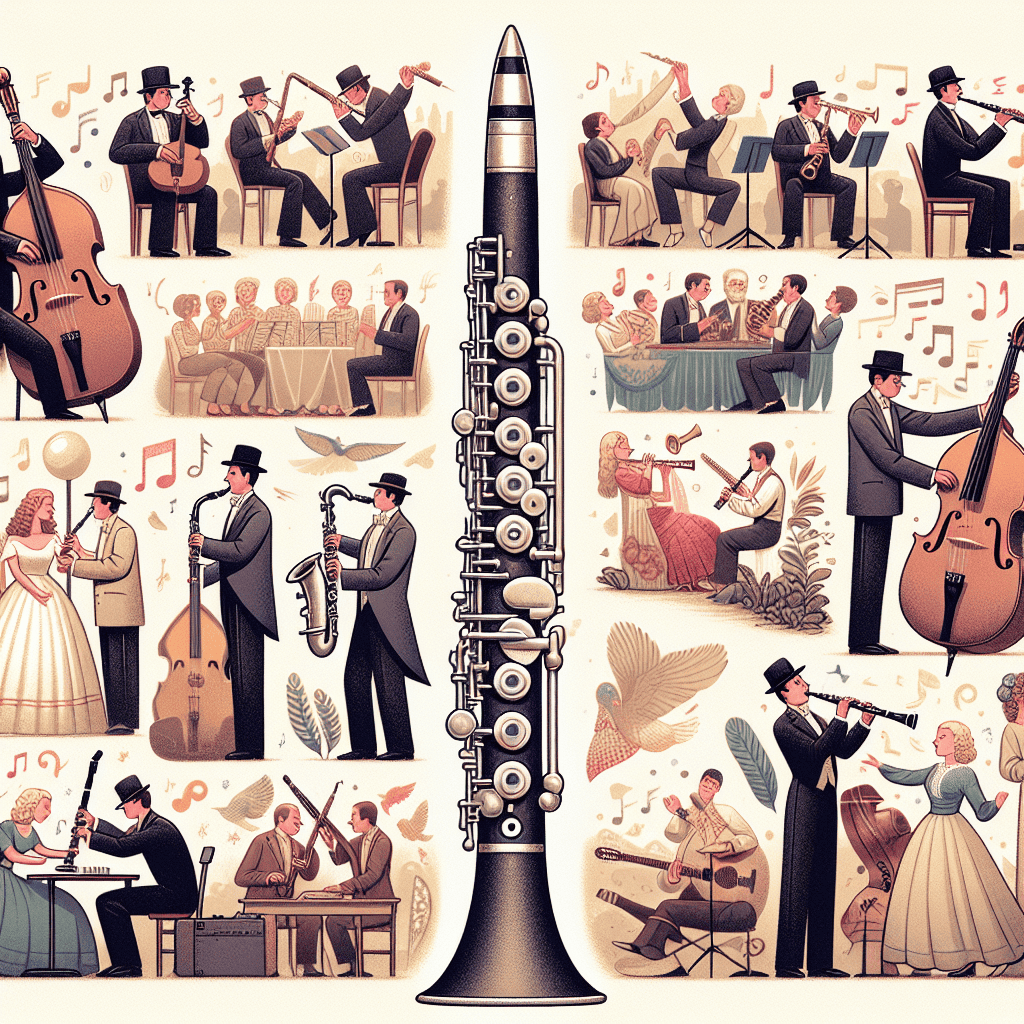When it comes to woodwind instruments, the clarinet holds a special place in music history. From classical orchestras to jazz bands, this versatile instrument has charmed musicians and audiences for centuries. If you're a music history buff or just love the clarinet, you're in for a treat. Here are some fascinating clarinet fun facts that span the ages, with a nod to the renowned Martin Freres brand, known for its quality craftsmanship and rich history in clarinet making.
The Birth of the Clarinet
The clarinet as we know it today was invented around 1700 by Johann Christoph Denner, a German instrument maker. Before the clarinet, there was the chalumeau, a simpler woodwind instrument. Denner's innovation involved adding a register key, which allowed the instrument to play higher pitches and extended its range, giving birth to the modern clarinet.
The Clarinet Family
The clarinet is not just a single instrument but a family of instruments. The most common type is the B? clarinet, but there are many others, including the A clarinet, E? clarinet, bass clarinet, and contrabass clarinet. Each member of the clarinet family has its own unique sound and role in various musical settings, from orchestras to marching bands.
| Clarinet Type | Range | Common Use |
|---|---|---|
| B? Clarinet | E3 to C7 | Orchestra, Band, Solo |
| A Clarinet | E?3 to B6 | Orchestra, Chamber Music |
| E? Clarinet | G3 to E?7 | Orchestra, Military Band |
| Bass Clarinet | D?2 to G5 | Orchestra, Jazz |
Historical Milestones
One of the earliest notable compositions for the clarinet is Wolfgang Amadeus Mozart's Clarinet Concerto in A major, K. 622, composed in 1791. This piece is a staple in the clarinet repertoire and showcases the instrument's expressive capabilities. Another significant moment in clarinet history was the development of the Boehm system in the 1830s by Hyacinthe Klosé and Louis-Auguste Buffet. This key system, inspired by Theobald Boehm's flute design, greatly improved the playability and intonation of the clarinet.
Famous Clarinetists
Throughout history, many virtuosos have brought the clarinet to the forefront of the music world. Benny Goodman, known as the “King of Swing,” was a pivotal figure in popularizing jazz clarinet in the 20th century. In the classical realm, Richard Stoltzman has made significant contributions to contemporary clarinet music. Both musicians have left an indelible mark on the instrument's legacy.
Clarinet in Different Genres
The clarinet is incredibly versatile and can be found in a variety of musical genres. In classical music, it plays a vital role in orchestras, chamber music, and solo repertoire. Jazz clarinetists have pushed the boundaries of the instrument, creating new sounds and styles. The clarinet also appears in folk music traditions around the world, from klezmer bands to traditional Turkish music.
Clarinet Genres Timeline
- 1700s: Classical orchestras
- 1800s: Military bands and chamber music
- Early 1900s: Jazz and swing
- Mid 1900s: Folk and world music integration
- Late 1900s to present: Contemporary classical and experimental genres
Unique Clarinet Facts
- The word “clarinet” comes from the Italian word “clarinetto,” meaning “little trumpet.”
- Clarinets are usually made from grenadilla wood, but some are crafted from plastic or other materials to suit different playing environments.
- The clarinet has a cylindrical bore, which gives it a distinctive sound compared to other woodwinds, like the oboe or flute.
- The role of the clarinet in military bands dates back to the 18th century, where it was used to add depth and variety to the ensemble's sound.
Maintenance and Repair
Proper maintenance is key for keeping a clarinet in top playing condition. Regular cleaning, swabbing out moisture, and oiling the keys are basic steps every clarinetist should follow. For repairs, it's best to consult a professional, especially for complex issues like pad replacement or key adjustments. Brands like Martin Freres have a reputation for durability, but even the best instruments need care to maintain their quality.
Valuing a Clarinet
Valuing a clarinet can be a tricky process that involves evaluating its age, condition, brand, and historical significance. Vintage clarinets, especially those from well-known brands like Martin Freres, can be highly sought after by collectors and musicians alike. The provenance of the instrument, including previous owners and its use in notable performances, can also affect its value.
Teaching the Clarinet
Teaching the clarinet requires a deep understanding of the instrument and its repertoire. Whether you're instructing beginners or advanced players, it's important to cover the basics of sound production, finger technique, and musical expression. Encouraging students to explore a variety of genres can help them become more versatile musicians. Additionally, using high-quality instruments, like those from Martin Freres, can enhance the learning experience by providing reliable and resonant sound.
Buying and Selling Clarinets
When buying a clarinet, it's crucial to consider factors such as the player's level, the instrument's material, and its intended use. Professional clarinets often feature advanced key systems and superior craftsmanship, making them a worthy investment for serious musicians. Selling a clarinet involves accurately representing its condition and history, which can appeal to potential buyers. Trusted brands like Martin Freres are known for their consistent quality, which can make them a desirable choice in the marketplace.
Whether you're a seasoned clarinetist or a curious beginner, understanding the rich history and unique qualities of this instrument can deepen your appreciation and enhance your musical journey. From its early days to modern innovations, the clarinet continues to evolve and inspire, making it a beloved fixture in music.







